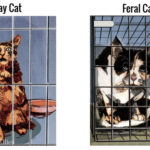Applesauce, a smooth and sweet treat enjoyed by many, might seem like a harmless snack to share with your feline friend. As cat owners, we’re often curious about extending our favorite foods to our pets, but it’s crucial to understand what’s truly safe and beneficial for them. So, Can Cats Eat Applesauce? Let’s delve into the details and uncover whether this popular human food is a suitable treat for your kitty.
Apples and Cats: A General Overview
To understand if applesauce is a good choice, we first need to consider apples themselves in a cat’s diet. Cats are obligate carnivores, a biological classification that means their bodies are designed to thrive on a diet primarily composed of meat. Their digestive systems are optimized to extract nutrients from animal proteins, and they don’t efficiently process plant-based nutrients in the same way humans or even dogs do.
While the flesh of an apple isn’t inherently toxic to cats, it offers minimal nutritional value to them. Apples are rich in fiber, which, while beneficial for humans in moderation, can actually cause gastrointestinal (GI) upset in cats. This can manifest as anything from mild discomfort to more noticeable issues. Furthermore, apples contain natural sugars, and a high sugar intake can lead to unhealthy blood sugar fluctuations, especially concerning for cats with pre-existing conditions like diabetes or pancreatic issues. It’s also important to remember that certain parts of the apple, specifically the stems, leaves, and seeds, contain cyanide. While the amount in a few seeds is small, it’s best to avoid any risk, as cyanide is toxic to cats in larger quantities.
 A close-up of sliced apples, highlighting the flesh and core.
A close-up of sliced apples, highlighting the flesh and core.
Therefore, while a tiny piece of apple flesh is unlikely to harm a healthy cat, it should definitely be considered a treat, and not a regular part of their diet. If you’re thinking about sharing any fruit with your cat, especially if they have any health concerns, consulting your veterinarian first is always the wisest course of action. This is especially important for cats with sensitive stomachs, diabetes, or those prone to weight gain.
Applesauce and Cats: Why It’s Usually a No-Go
Now, let’s focus specifically on applesauce. While cooked apple flesh, in very small amounts, is generally considered safe for cats, applesauce presents a different picture. Commercially prepared applesauce almost invariably contains added ingredients that are not suitable for cats. These often include sugar, cinnamon, and various other spices to enhance flavor for human palates.
These added ingredients are where the problem lies for our feline companions. Added sugars contribute unnecessary calories and can exacerbate the risk of blood sugar imbalances and weight gain. Cinnamon and other spices, while seemingly benign to us, can actually be irritating or even toxic to cats in certain amounts. Some spices can cause digestive upset, and others can have more serious effects.
So, if your cat shows curiosity towards your bowl of applesauce, it’s best to politely decline. While a very small lick of plain applesauce might not be immediately toxic, it certainly isn’t a healthy or recommended snack for your kitty. If you’re looking to offer a tiny taste of apple, sticking to a small piece of plain, cooked apple flesh is a much safer and more appropriate option.
Safe Ways to Offer Apples to Your Cat (If You Must)
Many cats simply won’t be interested in apples, and that’s perfectly fine! Remember, apples offer negligible nutritional benefits to cats and should only ever be considered a treat. Too much apple can easily lead to GI upset in cats, so moderation is absolutely key if your feline does develop a taste for it.
If you do decide to offer apple to your cat, preparation is crucial. Always start by thoroughly washing and peeling the apple. The peel, while nutritious for humans, adds unnecessary fiber for cats and is best removed. Next, and very importantly, remove the stem and core, ensuring absolutely no seeds are present. Cut the apple flesh into very small, roughly ¼-inch squares.
 A hand carefully preparing apple slices for a cat, demonstrating safe cutting and portioning techniques.
A hand carefully preparing apple slices for a cat, demonstrating safe cutting and portioning techniques.
You can offer these small squares raw or lightly cooked. Cooking the apple can make it slightly easier for your cat to digest. Regardless of whether it’s raw or cooked, limit the portion size to just one or two of these tiny squares, offered only once or twice a week at most. Exceeding this amount could lead to digestive issues such as vomiting, diarrhea, gas, or general abdominal discomfort in your cat.
Exploring Safer Fruit Options for Cats
Fruits and vegetables, in general, are not essential components of a cat’s diet, and many cats will show little to no interest in them. However, if your cat does exhibit curiosity about fruits, it’s important to know which options are considered safer. Some fruits that are generally recognized as safe for cats in very small quantities include blueberries, bananas, and cantaloupe.
It’s always best to consult with your veterinarian before introducing any new food, including fruits, into your cat’s diet. They can provide personalized advice based on your cat’s individual health, age, and dietary needs.
In conclusion, while a tiny amount of plain cooked apple flesh, prepared safely, might be an occasional treat for some cats, applesauce is generally not a good choice due to added sugars and spices. Prioritize a balanced, meat-based diet for your feline companion, and remember that treats, including fruits, should only be given in moderation and with careful consideration.

